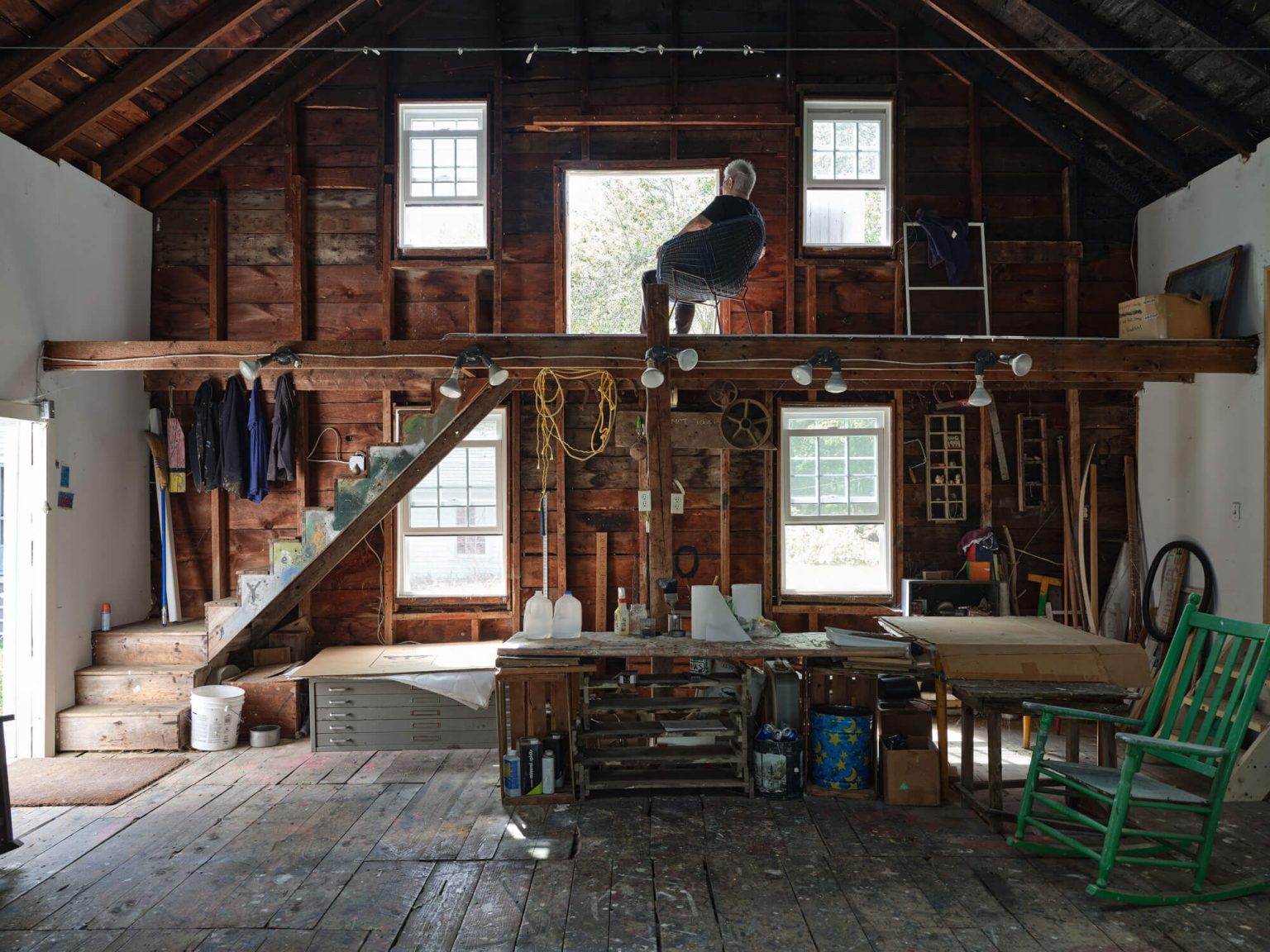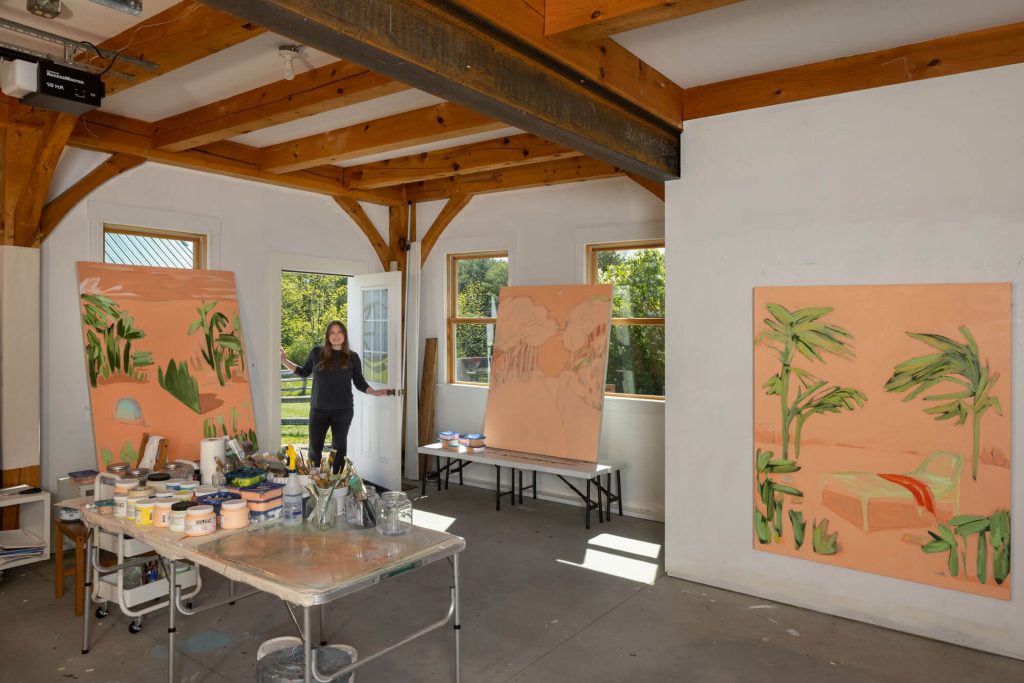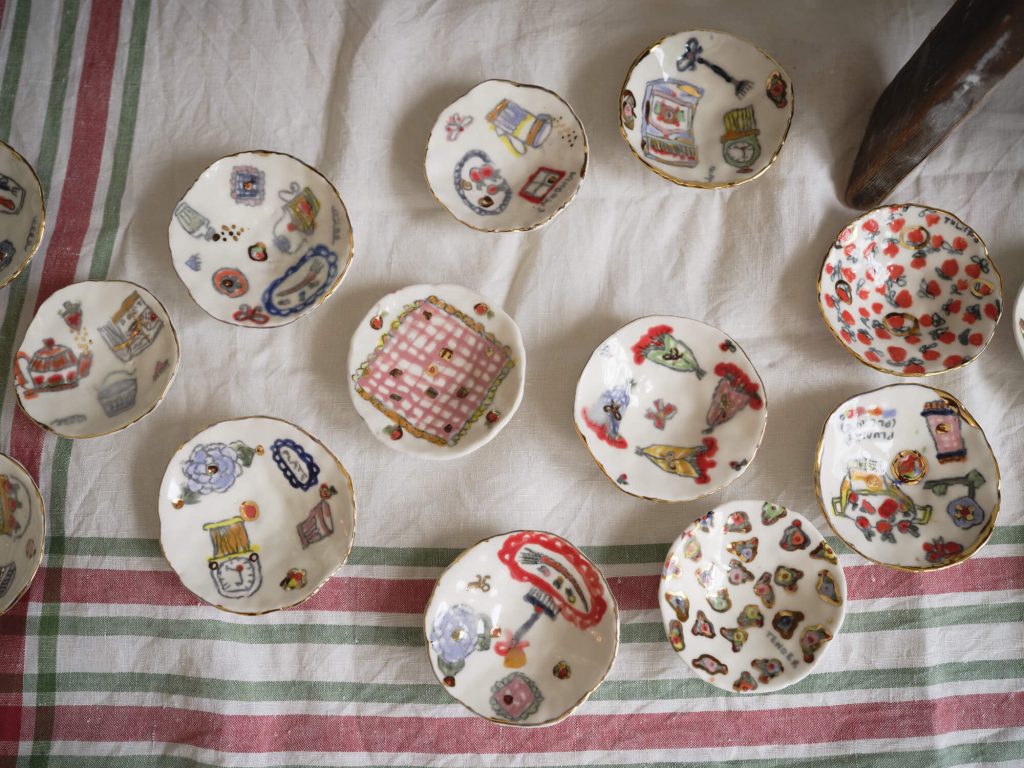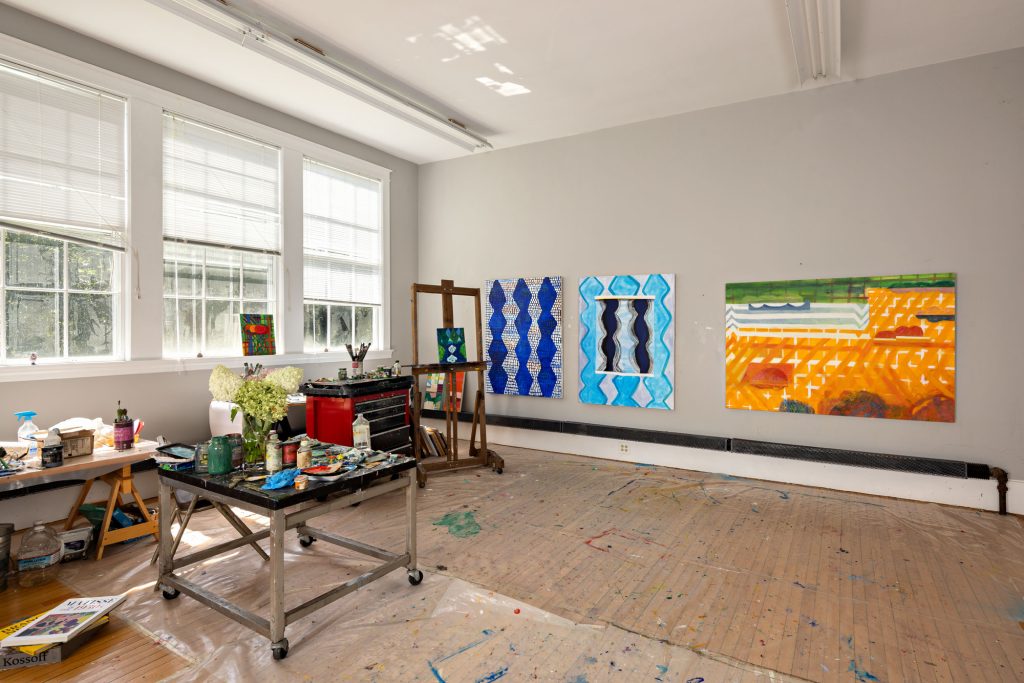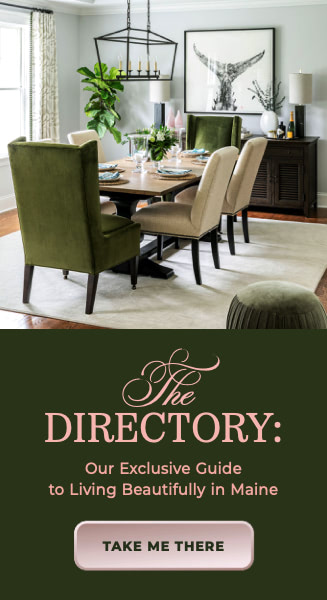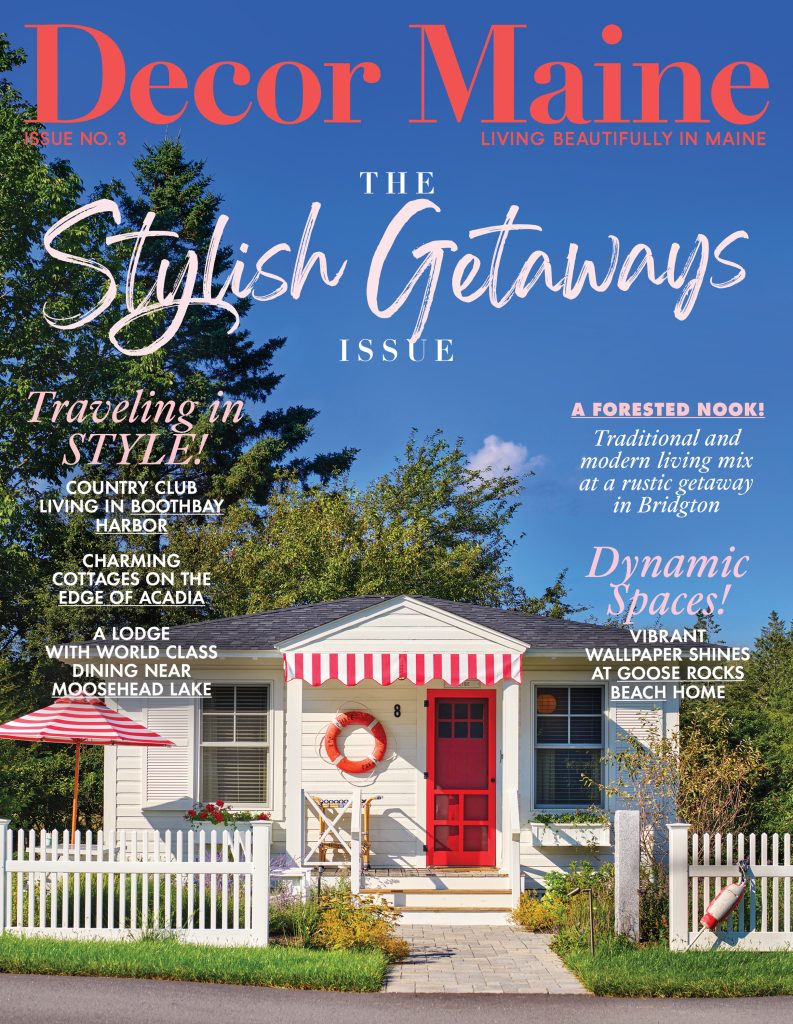When the painter Katherine Bradford comes to Maine from New York each summer, a set of colorful buoys hangs at the barn door in greeting, letting her know she’s home. The sea, too, welcomes her. “The first thing I notice,” Bradford says in a recent conversation, “is how great it smells: the salt air, the fog, the fact that the sea is nearby.” Then comes the business of settling in: every year, Bradford, who leaves the walls clear for winter tenants to make themselves at home, hangs a new selection of art from the work she’s collected—by purchase and by trade—from artists she admires. One painting always remains: a portrait of her son Arthur, by the late Carlo Pittore, hangs in the stairwell. Children visit and bring the grandchildren who, around swimming, make art in the barn, which is later hung and admired by family and neighbors.
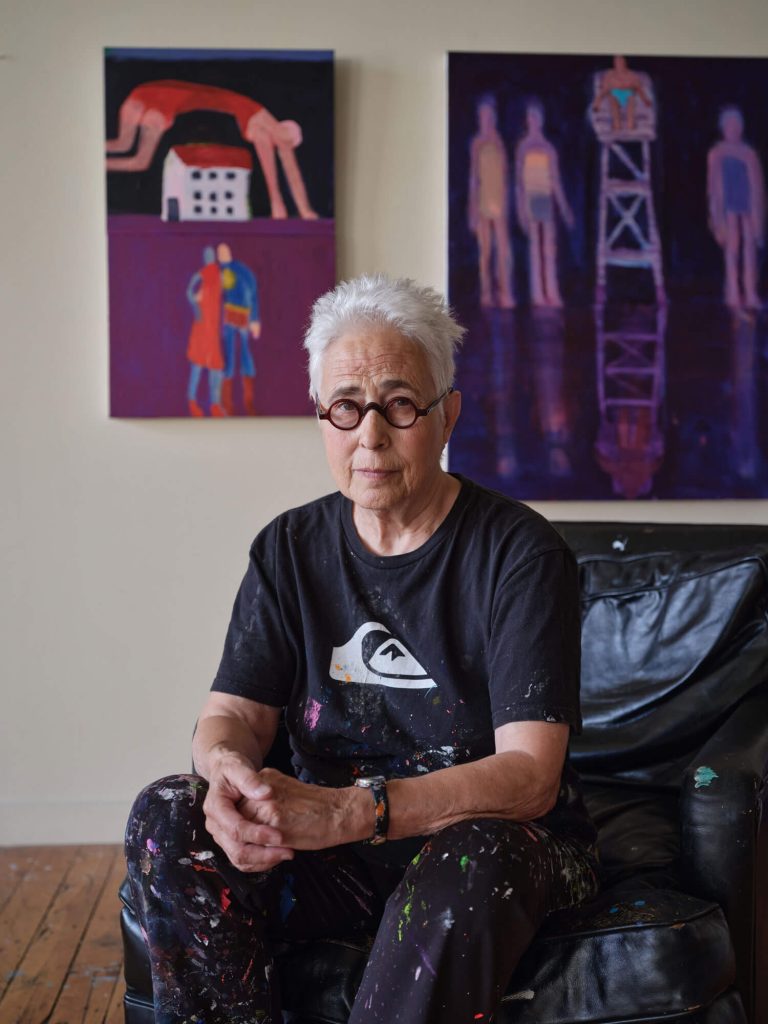
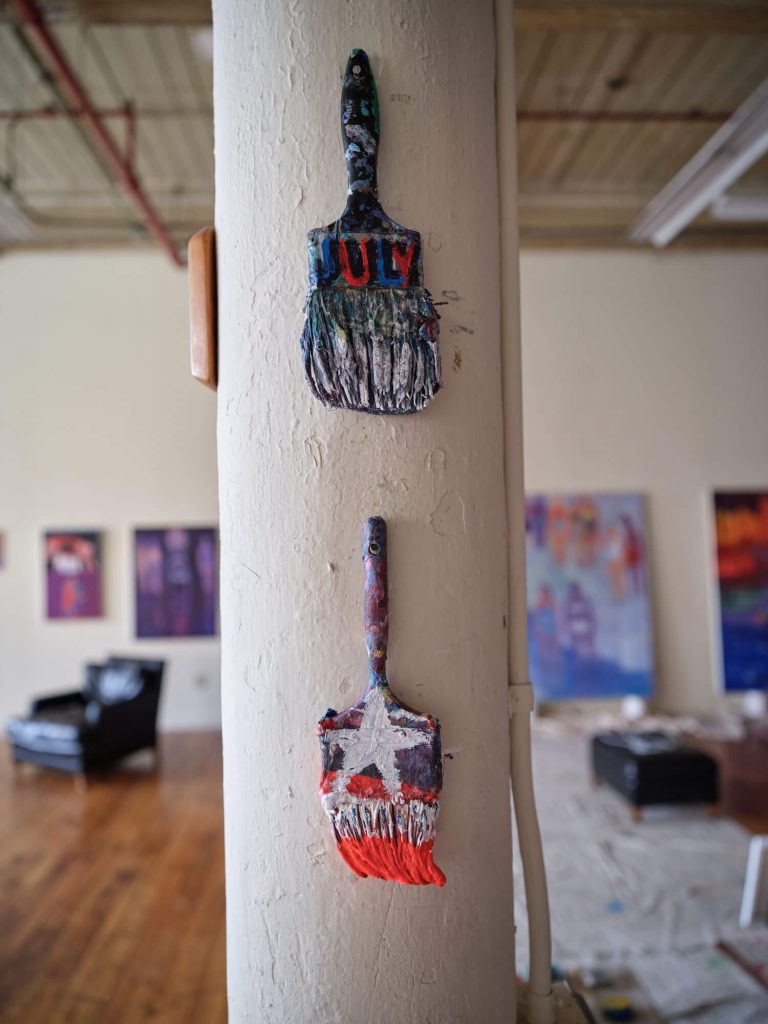
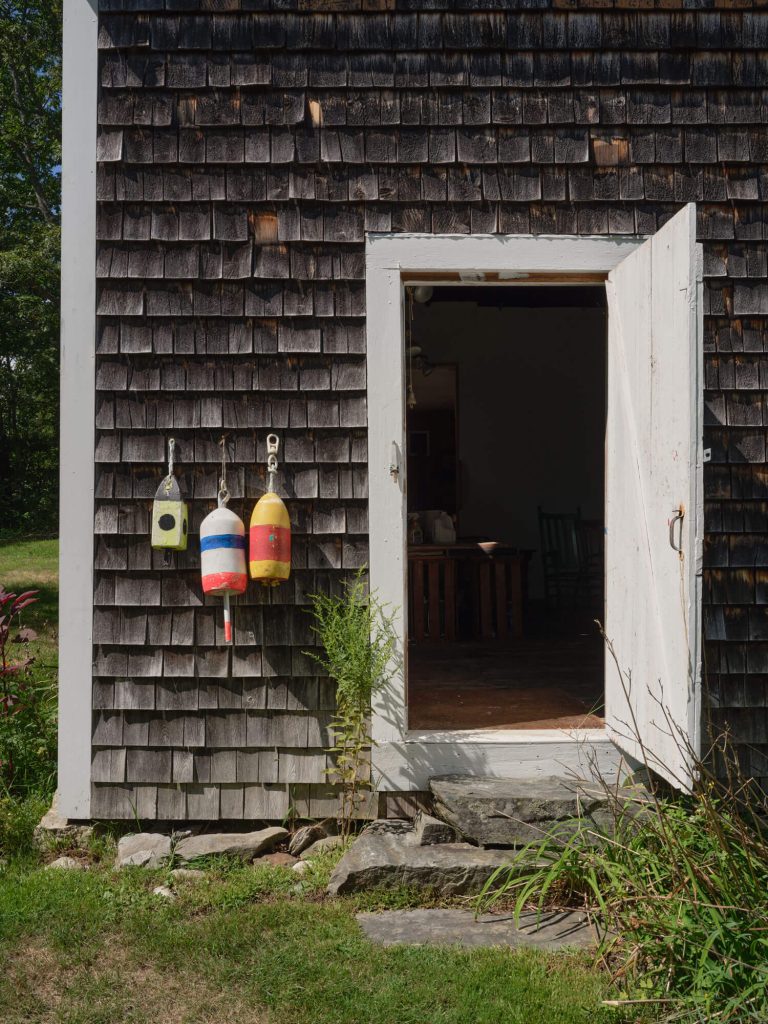
For Bradford, 81, the contrast between New York City and Maine inspires her. “Back in New York, there’s all the rushing around and museum shows,” and in Maine she slows down, moves at a different pace to paint, think, and gather with family. “There’s not as much separation between [Maine and New York] as you might think,” Bradford reflects, considering each place with specific esteem. “I get a lot of ideas by going back and forth.”
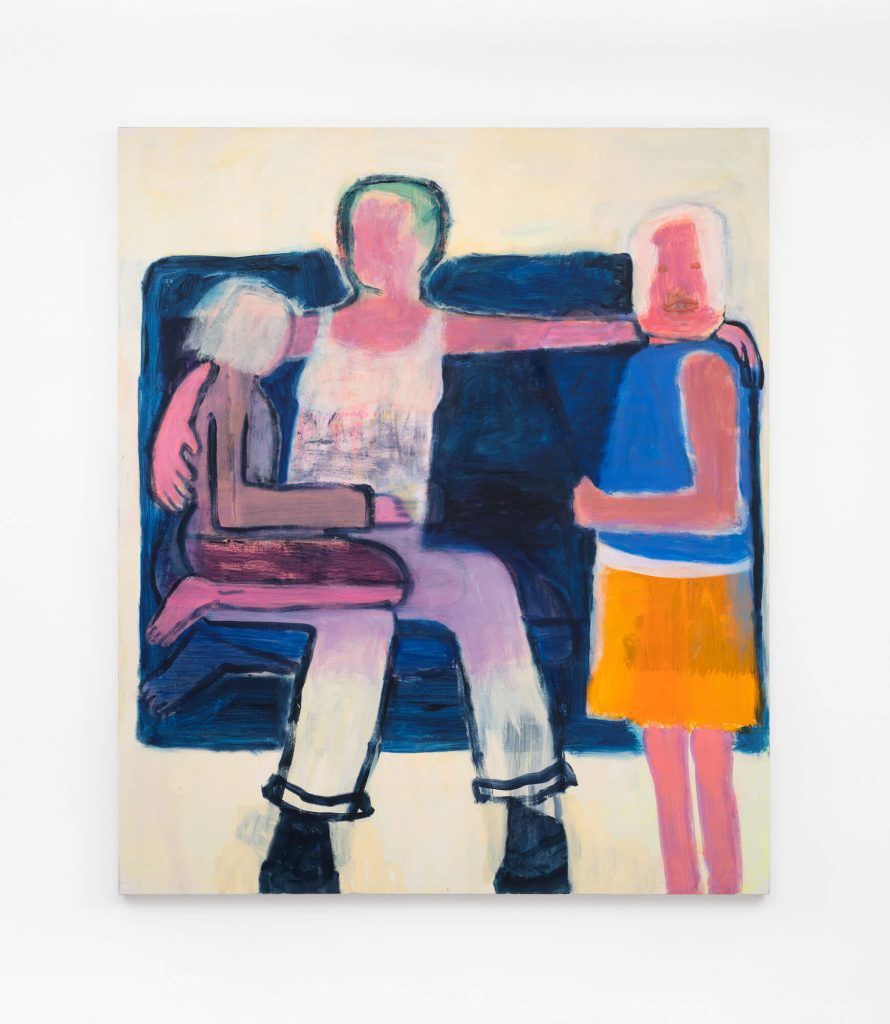
A Maine summer melts the demand for New York’s speed, and time spent looking out at the sea or lilacs or apple trees makes for good soul work. While in Maine, Bradford works out of a spacious and light-filled studio in Fort Andross Mill in Brunswick. “I can feel the history here,” she says. “It’s profound thinking of this as a huge space where so many people worked together.” She arrives at her canvases not knowing what will happen. “I don’t do sketches or work from photographs or drawings,” Bradford says about her process. “It’s improvisational,” she says, a thrilling approach I think one can feel in her paintings. I ask Bradford if she thinks of painting as an extension of herself, a form of showing up and being. She considers for a moment. “It is, I think, yes.”
Because her paintings are so intuitive, Bradford often needs time before she understands what they mean. A painting of a spaceship rests against her studio wall: “This is me, I think, in my own spaceship, steering my career.” Then she reconsiders. “No, I’m navigating, navigating the art world so I don’t crash.” Her last New York show, Mother Paintings, at Canada gallery in 2021, depicted figures in all manner of tender embrace: hands gently resting on a shoulder or the small of a back, arms wrapped around one another, people sitting—sometimes stacked three high—on one another’s laps, figures gathering around a table while a larger figure stares as if from a distance or memory. Such palpable longing and yearning abound in these paintings, a desire for closeness at a time we knew we would have none. Bradford’s paintings often evoke our shared fears, needs, and hopes, and the meaning we make from being in this life together.
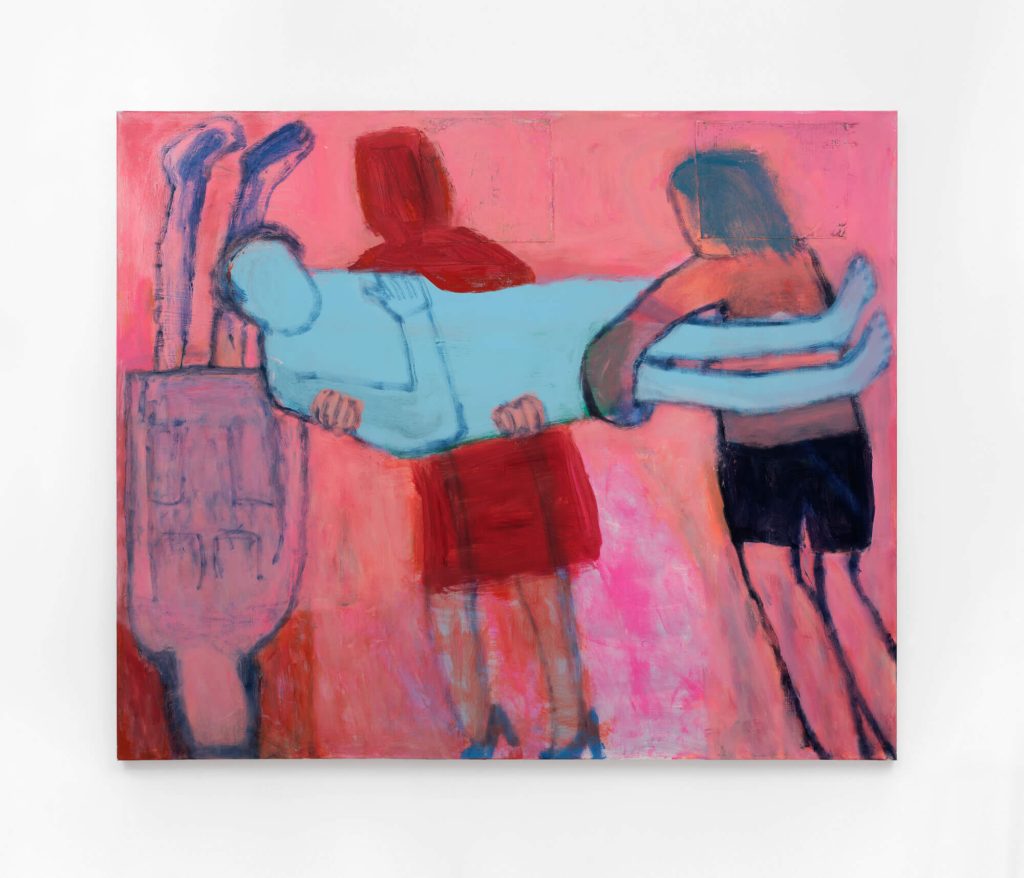
Bradford asks me if I’ve seen the television show Maine Cabin Masters. I haven’t, so she describes it for me, tells me she loves it. “Carpenters come in to fix up these cabins that have been in the family for sometimes four or five generations,” she says. “The families are not necessarily people of means, and many of the cabins were built before air-conditioning, so it was great to go to a lake in the summer.” I can feel the admiration in her voice for the history embedded into these homes and the care taken to preserve them, so the owners can someday hand the cabins down to their kids. “The entire family comes to see the home at the end of each show,” she says. Home is about history and architecture, but, too, it’s about the gathering that happens. Bradford’s farmhouse, on one hand, is a place where people worked. “But,” Bradford adds, “more importantly, it’s where they lived.” ▪
